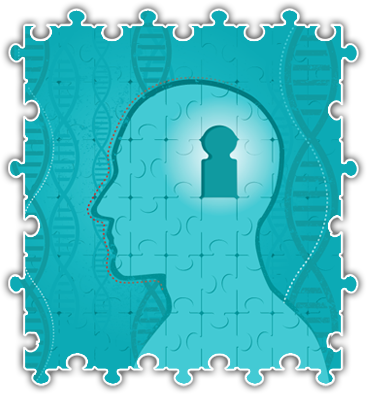What is Research?
Research is a detailed study of a subject, especially in order to discover (new) information or reach a (new) understanding. Health research is focused on ways to help people live long and healthy lives.
Health research can take place in a medical setting or in a community setting. Many people are familiar with “clinical trials” in which a new medicine or procedure is tested to see if it is more effective than an existing one. Research is also done on how to prevent disease through diet and exercise and on health programs, such as effective ways for people to stop smoking. Health research may also involve participating in a telephone survey or participating in a focus group.
Why is Research Important?
The purpose of research is to find new knowledge. The more scientists learn about health through research, the more they know about which drugs, behaviors, and other treatments work best for specific groups of people and which are effective for the whole population.
For example, if a doctor treats one patient and that patient gets better, that is important for that patient. In a research study, if 1,000 patients – both men and women, White, African American, Latino, Asian American, and Native American – are treated with a new drug and the majority of them show improvement in their symptoms, then researchers have solid evidence that can be applied more broadly to everyone.
Listen to Dr. John Ruffin, Founding Director of the National Institute on Minority Health and Health Disparities, on the importance of participating in research.
Transcript "We have to let people know that you are taking pills, for example, perhaps for your diabetes. Or you’re taking pills, perhaps for your hypertension. And keep in mind, that to get there, to get to that point to pop that pill that you took this morning, there were studies that were done on these conditions for these treatments to be available to you, okay? I’ll give you two examples. One, it could have been that the study can be generalized, in that what I took, worked this morning. And it could be that it worked for all three of us sitting at this table, right? That’s good. But it could also mean, and I’ve heard people say, that I took that, you know, “I took that medicine and it helped me.” And I’ve heard other people say “I took that medicine and it didn’t do any good at all. It didn’t help me at all. I didn’t get the same impact from it that he said he got from it.” Well, that means there are differences in us, in different people. And if you’re not included in that study or whatever, then we don’t know how to help you. So you’re going to get left out of interventions and you’re going to be left out of cutting edge research that could be very, very helpful to you if you’re not a participant in the process."
1. Understanding the Human Genome
The National Institutes of Health, in collaboration with numerous international organizations, began the Human Genome Project (HGP) in October of 1990 with one goal of identifying all the genes contained in human DNA. The project was completed in 2003 with 99% of the human genome sequenced and approximately 20,500 genes identified. The project allowed scientists to learn the functions of many of these genes and to identify variations in some genes that lead to increased risk of certain diseases.
Today, these and other incredible discoveries from the HGP are contributing to new treatments for cancers, understanding mental illnesses, enabling the discovery of new drugs, and for many people, helping them to understand their risk for disease by understanding their family history. Scientists now know that slight variations in DNA sequences can have a major impact on whether or not we develop a disease and on our particular responses to such environmental insults as bacteria, viruses, and toxins. They also impact our reactions to drugs and other therapies.
Source http://www.genome.gov/10001772

2. Dramatic Reductions in the Transmission of HIV from Mother to Child
HIV transmission from mother to child during pregnancy, labor and delivery, or breastfeeding is called perinatal transmission. In 1994, researchers found that giving zidovudine (ZDV) to pregnant women reduced the rate of HIV transmission from mother to child. This research led to a recommendation for routine testing of pregnant women, and standard treatment of HIV+ women and their newborns has resulted in tremendous decreases in the number of children perinatally infected with HIV.
SourceConnor, E. M., Sperling, R. S., Gelber, R., Kiselev, P., Scott, G., O'Sullivan, M. J., ... & Balsley, J. (1994). Reduction of maternal-infant transmission of human immunodeficiency virus type 1 with zidovudine treatment. New England Journal of Medicine, 331(18), 1173-1180.
3. Research Used to Reduce Deaths from Heart Disease
For many years, the National Institutes of Health have funded multiple research programs that have led to definitive evidence that smoking cessation, reducing obesity, increasing physical activity, and controlling blood pressure can reduce deaths. For example, these research studies helped us to understand that inactive people are nearly 2 times as likely to develop heart disease as those who are active and that 30 minutes of moderate intensity aerobic activity five times a week can have positive health effects. These studies, and the changes made by individuals and health providers, have contributed to decreases in deaths from heart disease. In fact, according to the Centers for Disease Control and Prevention, by 2000, death rates for coronary heart disease had decreased 51% from 1972.
Source http://www.nhlbi.nih.gov/educational/hearttruth/downloads/html/infographic-riskfactors/infographic-1.htm
Inactive people are nearly 2x as likely to develop heart disease as those who are active.
Aim for at least 2 hours and 30 minutes of moderate-intensity aerobic activity each week.
Three things to do (10 minutes) = 30 minutes of physical activity
-

Take a walk around the block
-

Dance to three of your favorite songs
-

Go for a bike ride in the neighborhood
Additional Resources
-
Building Trust Rap
-
CDC – Division for Heart Disease and Stroke Prevention: Interactive Atlas
-
Healthy Black Family Project PSA
-
Jerome Bettis and Research
-
National Institute on Minority Health and Health Disparities (NIMHD)
-
National Institutes of Health (NIH)
-
National Institutes of Health – Research Matters
-
NIH Viewbook, 2011
-
Turning Discovery into Health: Progress in Heart, Lung, and Blood Disease-Conquering Cardiovascular Disease
-
Unnatural Causes Overview
Important Question
How has research made a difference in health or health care in the last century?






